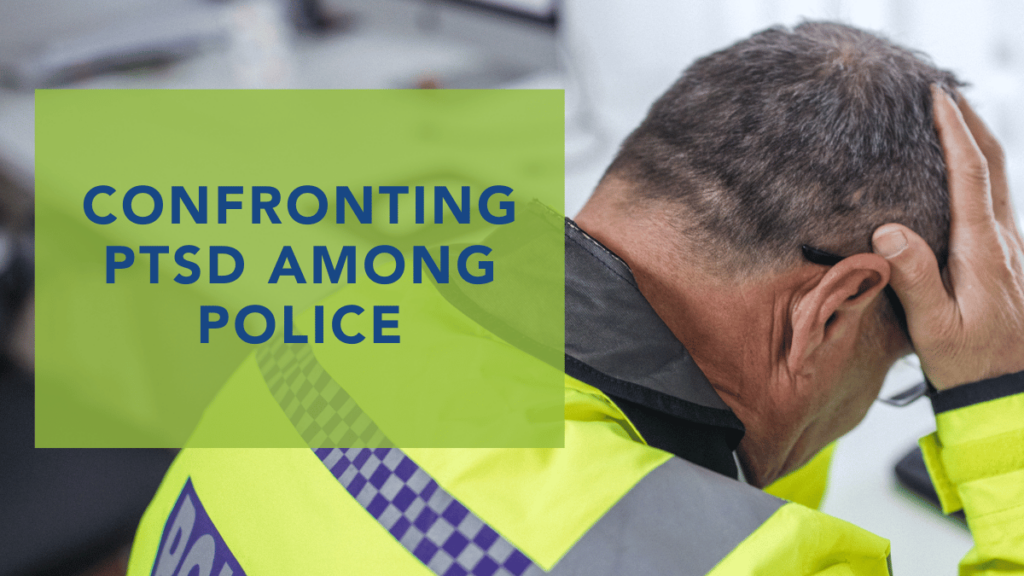Over the past few decades, our understanding of post-traumatic stress disorder (PTSD) has evolved significantly. What was once dismissed as “mere stress” or “nervousness” is now recognized as a complex and persistent set of symptoms resulting from exposure to trauma. For police officers, whose profession inherently involves high levels of stress and danger, acknowledging and addressing PTSD is crucial both for their well-being and their ability to serve effectively.
Today, law enforcement agencies are recognizing the profound impact of PTSD and implementing more progressive measures to support officers. This shift is reflected in initiatives like Missouri’s SB57, which dedicates funding to routine mental health evaluations and crisis support after critical incidents. While this is a step forward, deeper, systemic changes are required to fully address the challenges PTSD poses to police officers and those they serve.
Overcoming Barriers to Treatment
Police culture, though distinct across departments, often shares foundational values such as bravery, resilience, and trust in the “family” of law enforcement. While these values foster camaraderie, they can also contribute to harmful stigmas around seeking mental health support. Many officers feel they must be “stronger than civilians,” leading to the perception that asking for help is a sign of weakness. This belief is compounded by the fact that mental health professionals are often viewed as outsiders and associated with punitive measures, such as pre-employment screenings or referrals from Internal Affairs.
To make meaningful strides in combating PTSD, agencies and professionals must focus on reducing these stigmas. Research-based insights show that integrating mental health into the daily operational fabric of law enforcement can help bridge this gap. For example, programs that embed mental health professionals into departments—such as ride-alongs or participation in social events—can strengthen trust and foster a culture where seeking help is normalized and encouraged.
Effective PTSD Treatments and Strategies for Law Enforcement
Evidence-based treatments (EBTs) are the gold standard for effective PTSD care. These therapeutic approaches, proven through rigorous research, provide effective ways of addressing trauma and fostering long-term recovery. Some of the most impactful EBTs include:
- Cognitive Behavioral Therapy (CBT): By exploring how thoughts, emotions, and behaviors interact, this therapy helps officers change negative patterns and improve coping mechanisms.
- Cognitive Processing Therapy (CPT): Officers are guided to challenge harmful beliefs about their trauma, enabling them to reduce its emotional impact.
- Prolonged Exposure Therapy: This method helps individuals confront and process their trauma by gradually engaging with its memory in a controlled and supportive environment.
- Cognitive Therapy: This approach helps officers modify pessimistic evaluations of their trauma, reducing the interference such thoughts have in their daily lives.
While these therapies are effective for the general population, law enforcement officers often require additional, tailored strategies.
Organizational Tools to Support Resilience and Recovery
Research-backed initiatives like the First Sign® Precision Wellness program represent a promising direction for addressing PTSD in law enforcement. This holistic program, grounded in data-driven insights, integrates technology and mental health expertise to proactively identify and assist officers in need. Key components include:
- Data Analytics for Risk Identification: Advanced analysis tracks trauma indicators, cumulative exposure, and anniversary dates of significant events. By identifying at-risk officers, interventions can be initiated before symptoms worsen.
- Tailored Wellness Plans: Supported by culturally competent clinicians, this approach ensures officers receive personalized care through structured conversations, case management, and ongoing support.
- Resilience-Building Interventions: These include scientifically tested tools proven to improve sleep, reduce anxiety, and lower PTSD symptoms over time.
Furthermore, creating peer-support networks within departments has been shown to break down cultural barriers. Fellow officers often have unique insight into the stress of policing, providing an invaluable layer of emotional support that complements clinical interventions.
From a leadership perspective, providing supervisors with tools such as pre-written scripts, checklists, and training resources ensures that conversations around mental health are conducted thoughtfully and effectively. By making officer well-being a visible priority, departmental leaders can play an active role in reshaping the narrative around PTSD.
Changing the Narrative Around PTSD in Policing
The road to fully addressing PTSD in law enforcement communities involves not only providing resources and treatments but changing the ingrained attitudes that have historically hindered progress. By fostering trust, integrating mental health professionals into the fabric of departments, and leveraging the latest research-based tools and programs, agencies can create an environment where addressing mental health challenges is seen as an integral part of protecting and serving.
Law enforcement is a profession unlike any other, and its members deserve support systems that reflect the unique demands of their work. By combining data-driven strategies with empathetic leadership and meaningful cultural shifts, we can ensure officers are empowered to prioritize their mental health and continue serving their communities with strength and resilience.
